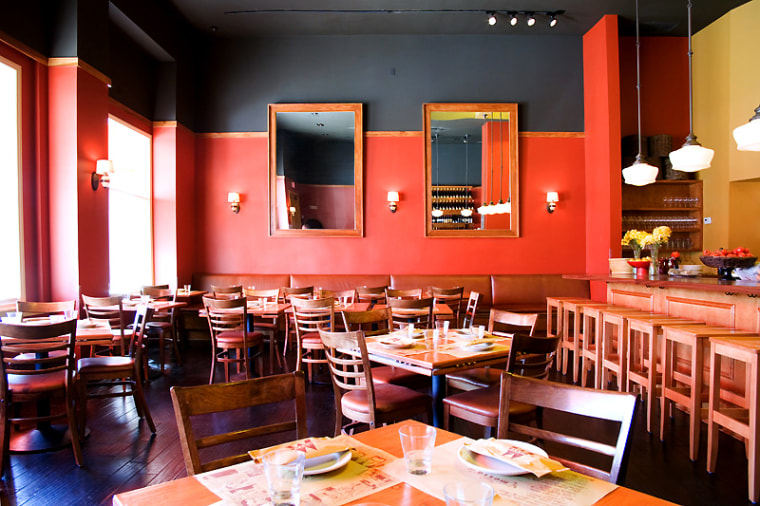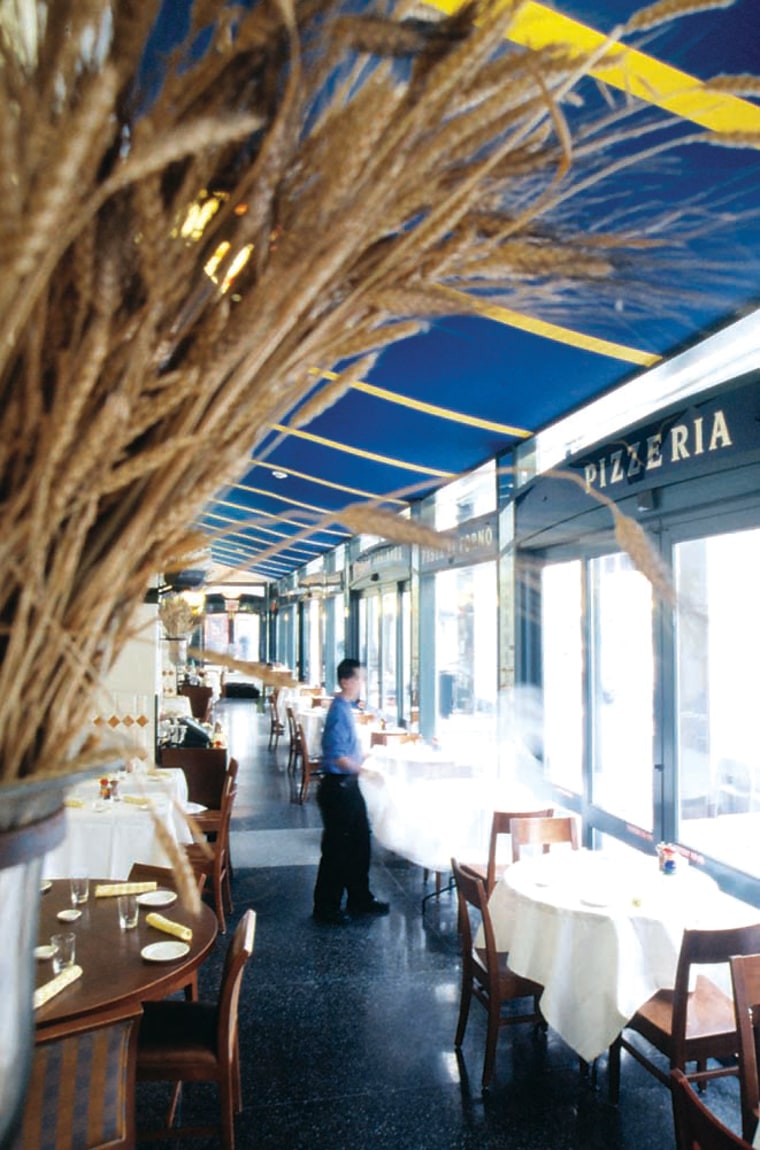Pizza would seem one of the simplest things in the world to make well—dough, tomatoes, cheese, some spices, maybe some pepperoni and a hot oven. And Americans should know what makes a good pizza; after all, according to Los Angeles Magazine, we consume 350 slices per second. That's 100 acres of pizza each day.
Yet the state of pizza in the U.S. is largely in the hands of the giant franchise operations that churn out over-stuffed, over-hyped pies from pre-packaged commissary ingredients. Most Americans probably consider the best pizza to be the dough-iest, most calorie-laden, most stuffed-with-cheap-ingredients, and the one delivered (steamed in a cardboard box) by a teenager in a funny hat.
Franchise pizzas are a big business: the leader, Pizza Hut, with 12,685 units, grosses $9 billion annually, according to Pizza Today Magazine. In contrast, the highest grossing independent, Pizza Shuttle, takes in $5.5 million with just one unit in Milwaukee; they offer 50 different toppings that include bacon, marinated chicken, kosher dill pickles, pineapple, bananas, even French fries.
As Ed Levine, author of "Pizza: A Slice of Heaven" wrote, after eating only at pizza chains for an entire week, "Chain pizza is for the most part awful stuff ... The pizza chains were all started by business people, as opposed to individuals interested in food. Go to the Web site of Little Caesar's or Pizza Hut or Papa John's. You'll find heartwarming stories of young people who overcame modest circumstances to achieve wealth and build big, successful businesses. You won't find stories of passionate pizza makers."
It's enough to make a Neapolitan cry. Pizza, you see, was invented in Naples, Italy, as poor people's food. (The tomato, incidentally, was brought to Italy from the Americas.) The most famous, most emblematic pizza—pizza alla margherita—was created in 1889 by Raffaele Esposito to commemorate a visit by the new Queen Margherita. Esposito created a pizza using tomato, mozzarella and basil to best represent the three colors of the new Italian flag.
The idea caught on, but was not known outside of Naples until immigrants from that region brought the pizza to the U.S. The first pizzeria in the New World was Lombardi's on Spring St. in New York City; it opened in 1905, and it's still there. Their savory baked pies quickly grew in popularity, first in Italian communities, then among the general populace. Ironically, then, pizza became popular in Italy only after it became significant here in the U.S.
The arrival of the big franchisers in the '70s did not put the independents out of business, but they seriously compromised the taste, texture and form of pizza. Indeed, rules were drawn up in the '90s by the Naples-based True Neapolitan Pizza Association, which insists on strict dicta for pizza-making that include the diameter of the pie; the kneading by hand, not machine; the oven design (brick or volcanic stone); the wood used and the temperature; and the specific ingredients used as toppings. An American branch of the Association was founded in Los Angeles in 1998.

The best pizzerias are run by pizza-makers, men (usually) who are willing to stand all day tossing their handmade dough, facing the heat of a fierce oven, and judging second by second when to shift their pizzas around to achieve even cooking, charred bubbling of the dough and the proper melting of the cheese.
Such is certainly the case at the much-heralded Pizzeria Bianco, where Chris Bianco, a Bronx boy, makes every single pizza by himself. The James Beard Foundation named him the Best Chef in the Southwest in 2003.
Since 1919, Mario's in the Belmont section of the Bronx has been perfecting its pizzas, which are very true to the Neapolitan style and which Ed Levine pronounced "excellent." So, too, the famous Frank Pepe Pizzeria Napoletana, which opened in 1925 in New Haven, Conn., has lines out the door—even when it's freezing. At Tacconelli's in Philly they prepare a limited amount of dough each day. Dedicated fans are known to call ahead to reserve their pies—which is why it won "Best of Philadelphia" from Philadelphia Magazine.

Thanks to top-notch chefs who gave their imprimatur to the humble pie and made them chic, California has had great influence on pizza. Wolfgang Puck, at Spago in Los Angeles, is one such notable influence. Celebrity chef Mario Batali partnered last year with super-baker Nancy Silverton to open Mozza, which the L.A. Times says is the "hardest reservation in town to get right now." Up in Berkeley, Alice Waters cooked pizzas above her famous Chez Panisse at The Café at Chez Panisse. Patricia Unterman in her San Francisco Food Guide says, "you can always count on something sublime and ingenious here," not least the "crusty pizzas, aromatic from the wood-fired brick oven."
Back on the east coast, in Providence, R.I., George Germon and Johanne Killeen brought back the idea of a grilled pizza from Italy and started a whole new style at their restaurant Al Forno, which the New York Times described as a "brittle-skinned grilled pizza, a sublime and smoky combination of tomato, corn, fresh herbs and various cheeses." And, last fall Roberto Paciullo, who already runs the fine Roberto's restaurant in the Belmont section of the Bronx, opened Zero Otto Nove. The name means "089," the telephone prefix for Salerno, Italy, where Paciullo comes from. He brought over a young pizzaiolo named Riccardo who is fanatical about his crust and his ingredients; the place has been packed night after night with people who want the real thing.
Across the country, new independent pizzerias are still opening and doing great business. The future of pizza in America is still bright, as long as you stay away from chains with names like Hungry Howie's, Peter Piper and We Toss 'Em They're Awesome.
